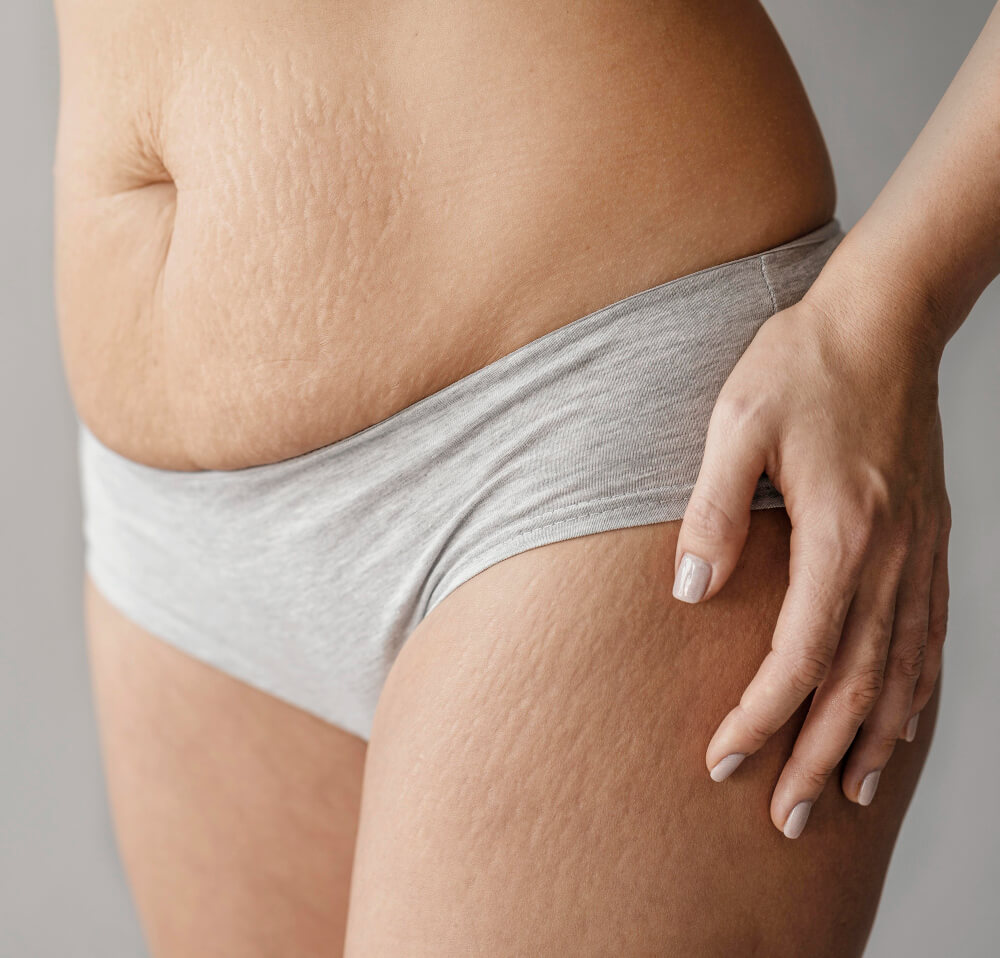Stretch Marks

Stretch marks are the visible lines that typically appear as pink, red, or purplish on the skin. The affected skin may feel slightly indented or textured. Some people may experience mild itching or discomfort around the stretch marks.
Causes of Stretch Marks:
- Rapid Growth: Stretch marks often occur during periods of rapid growth, such as puberty, pregnancy, or muscle-building. The skin can’t keep up with the body’s expansion, causing tears in the underlying tissue.
- Pregnancy: Expectant mothers frequently develop stretch marks as the abdomen expands to accommodate the growing baby.
- Weight Fluctuations: Sudden weight gain or loss can lead to the formation of stretch marks as the skin stretches and contracts.
- Genetics: A family history of stretch marks may increase the likelihood of developing them.
Treatments for Stretch Marks:
- Laser Therapy: Our clinic employs advanced laser therapies to stimulate collagen production, improving the appearance of stretch marks. The treatment encourages the skin to remodel and heal itself.
- Microneedling: Microneedling involves tiny needles creating micro-injuries in the skin. This process triggers the body’s natural healing response, promoting collagen production and reducing the appearance of stretch marks.
- Topical Creams: Topical creams containing ingredients like retinoids and hyaluronic acid to hydrate and nourish the skin, gradually fading stretch marks.
What causes stretch marks?
Stretch marks can be due to rapid growth, such as during pregnancy or significant weight changes. Genetics and hormonal factors also play a role.
Can anyone get stretch marks?
While anyone can develop stretch marks, they are more common in women, especially during pregnancy, and in individuals with a family history of stretch marks.
Are stretch marks permanent?
Stretch marks can fade over time, but they may not completely disappear. Proper treatment can help minimize their appearance.
Do creams and lotions work to get rid of stretch marks?
Some topical creams and lotions may help fade stretch marks, but they are generally more effective in conjunction with other treatments.
Are there different types of stretch marks?
Yes, stretch marks can be categorized into two types: striae rubra (new and reddish) and striae alba (older and silvery-white). Treatment approaches may vary for each.
Is laser therapy safe for treating stretch marks?
Laser therapy is considered safe and effective for treating stretch marks when administered by trained professionals.
How long does it take to see results from stretch mark treatments?
The time it takes to see noticeable results varies depending on the treatment and individual factors. Multiple sessions may be needed for significant improvement.
Can stretch marks come back after treatment?
While treatment can significantly improve the appearance of stretch marks, it's possible for them to reoccur, especially with significant weight fluctuations. Post-treatment care and maintenance can help prevent their return.
